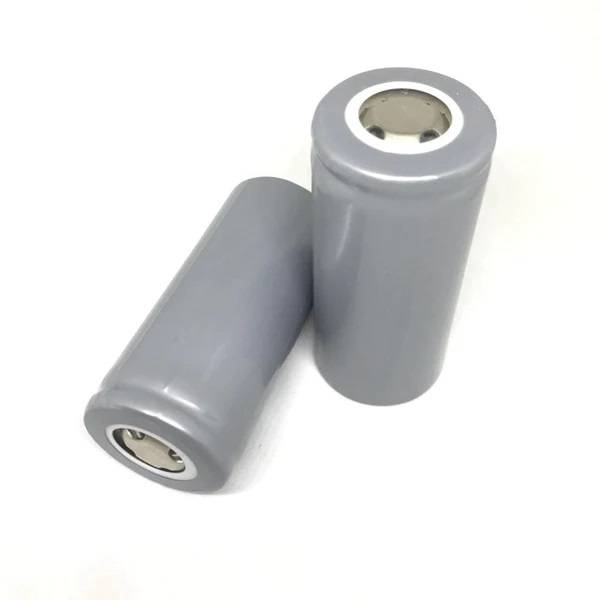Lithium-ion batteries are pivotal in driving a sustainable future, powering everything from electric vehicles to renewable energy systems. Their efficiency and adaptability make them essential for reducing greenhouse gas emissions and promoting clean energy solutions.
What Are Lithium-Ion Batteries and How Do They Operate?
Lithium-ion batteries are rechargeable energy storage devices that use lithium ions as a primary component of their electrochemistry. During discharge, lithium ions move from the anode to the cathode, generating electrical energy. Conversely, during charging, these ions move back to the anode, storing energy for future use.
Chart: Basic Components of a Lithium-Ion Battery
| Component | Function |
|---|---|
| Anode | Stores lithium ions during charging |
| Cathode | Releases lithium ions during discharge |
| Electrolyte | Facilitates ion movement between anode and cathode |
How Do Lithium-Ion Batteries Contribute to Sustainability?
Lithium-ion batteries significantly contribute to sustainability through their role in renewable energy integration and energy efficiency:
- Energy Storage: They store excess energy generated from renewable sources like solar and wind, making it available when needed.
- Reduced Emissions: By powering electric vehicles (EVs), they help decrease reliance on fossil fuels, leading to lower greenhouse gas emissions.
- Lifecycle Efficiency: Advances in recycling technologies are enhancing battery lifecycle management, minimizing waste.
Chart: Environmental Impact of Lithium-Ion Batteries
| Aspect | Impact |
|---|---|
| Carbon Emissions | Reduced emissions from EVs |
| Renewable Energy Storage | Supports grid stability and reliability |
| Recycling Potential | Reclaims materials, reducing resource extraction |
What Benefits Do Lithium-Ion Batteries Provide for Renewable Energy?
Lithium-ion batteries offer several advantages for renewable energy systems:
- High Energy Density: They can store large amounts of energy in a compact form, essential for applications like electric vehicles and grid storage.
- Fast Charging: Their ability to charge quickly makes them suitable for various applications, including public transport systems.
- Long Cycle Life: With proper management, lithium-ion batteries can last several years, providing reliable service across their lifespan.
What Challenges Must Be Overcome in Lithium-Ion Battery Lifecycle Management?
Despite their advantages, lithium-ion batteries face several challenges related to production and disposal:
- Resource Extraction: Mining lithium and other materials can have significant environmental impacts, including habitat destruction and water depletion.
- Recycling Processes: While recycling technologies are improving, many batteries still end up in landfills due to inadequate recycling infrastructure.
- Safety Concerns: Risks associated with overheating and fires must be managed through better battery design and monitoring technologies.
How Is the Global Market for Lithium-Ion Batteries Changing?
The global market for lithium-ion batteries is experiencing rapid growth driven by increasing demand for electric vehicles and renewable energy solutions:
- Market Expansion: The market is projected to grow significantly over the next decade as more industries adopt battery technologies.
- Investment Surge: Companies are investing heavily in research to improve battery performance and sustainability.
- Technological Advancements: Innovations in battery chemistry and manufacturing processes are making lithium-ion batteries more efficient and cost-effective.
Industrial News
Recent reports indicate that major automotive manufacturers are ramping up production of electric vehicles powered by lithium-ion batteries. Companies like Tesla and General Motors are investing billions into battery production facilities to meet growing consumer demand. Additionally, advancements in recycling technologies are being prioritized to address environmental concerns associated with battery waste.
What Future Innovations Can We Expect in Lithium-Ion Battery Technology?
Future innovations in lithium-ion battery technology may include:
- Solid-State Batteries: These promise higher energy densities and improved safety compared to traditional lithium-ion designs.
- Enhanced Recycling Techniques: New methods are being developed to recover materials more efficiently from spent batteries.
- Alternative Chemistries: Research into other materials could reduce reliance on scarce resources like cobalt.
Redway Expert Insights
“Lithium-ion technology is at the forefront of the transition to sustainable energy,” states Dr. Jane Redway, an expert in battery technology. “As we enhance recycling processes and develop new chemistries, we can significantly reduce the environmental footprint of these essential power sources.”
FAQ Section
Q1: What is a lithium-ion battery?
A1: A lithium-ion battery is a rechargeable battery that uses lithium ions to store and release electrical energy through electrochemical reactions.Q2: How do lithium-ion batteries support sustainability?
A2: They enable renewable energy storage, reduce carbon emissions by powering electric vehicles, and improve lifecycle management through recycling.Q3: What challenges do lithium-ion batteries face?
A3: Key challenges include environmental impacts from resource extraction, inadequate recycling infrastructure, and safety concerns related to overheating.Q4: How is the market for lithium-ion batteries evolving?
A4: The market is growing rapidly due to increased demand for electric vehicles and renewable energy solutions, with significant investments in production technologies.Q5: What innovations are expected in lithium-ion battery technology?
A5: Future innovations may include solid-state batteries, enhanced recycling techniques, and alternative chemistries that reduce reliance on scarce materials.



